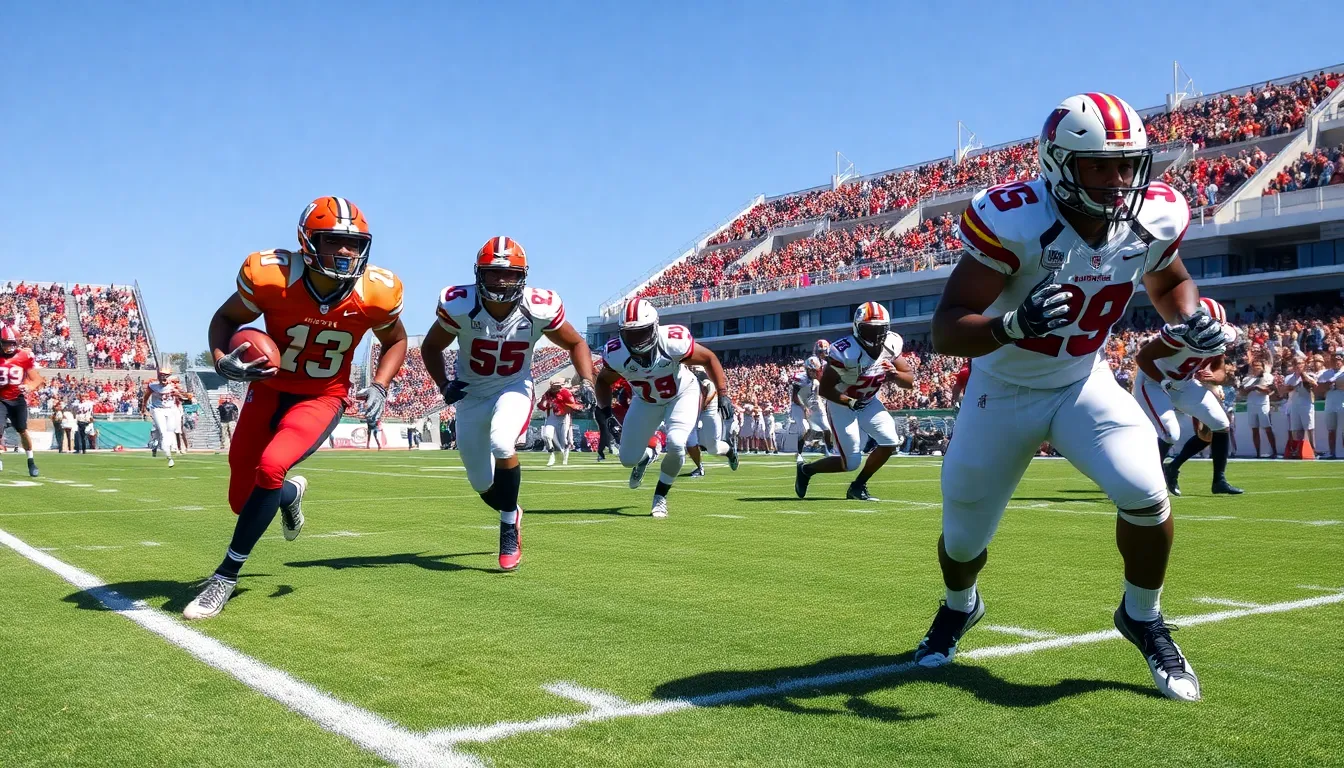Table of Contents
ToggleIn the world of college football, running backs are like the superheroes of the gridiron. They dodge tackles, charge through defenses, and practically defy physics as they dart across the field. But let’s be honest: how do you even rank them? Is it just about how many yards they rack up, or can you gauge greatness by how hard they can dodge a linebacker? Stick around as we dig deep into the nuances of college running back rankings. Spoiler alert: it’s going to be both informative and a little entertaining: think of it as your ultimate guide to who’s hot and who’s not in the running back realm.
Understanding the Role of Running Backs in College Football

Running backs are a crucial piece of the football puzzle. He is not just the guy with the ball, but also a key player in setting up the offense. They execute a variety of plays, be it running, blocking, or even receiving. In college football, these athletes are often the backbone of a team, providing the versatility needed for effective game strategy. With defensive schemes evolving, a running back today needs to embody speed, agility, and adaptability.
Besides, they must be able to read defenses. Imagine trying to decipher a puzzle while getting chased: it’s no walk in the park. Smart running backs can identify holes in the defense and exploit them. This ability often separates the good from the great. Also, a successful running back must possess a balance between power and finesse: they need to bulldoze through tackles while maintaining the agility to evade others.
Key Metrics for Evaluating Running Backs
When evaluating running backs, several key metrics come into play. These numbers don’t just tell a story: they sculpt the narrative of a player’s success and potential. First up is rushing yards, the bread and butter of any running back’s stats. It’s the most straightforward metric, capturing the total rushing yards gained in a season.
Next on the list is yards per carry (YPC). This figure dives deeper into efficiency, illustrating how many yards he gains per attempt. An elite running back often boasts a YPC above four yards.
Touchdowns are also significant. Scoring is paramount: after all, it’s a points game. High-scoring backs can turn games around and are often targeted in critical situations. Then there’s receptions. A running back’s ability to catch passes can add a dynamic layer to their game, affecting how defenses prepare.
Finally, fumbles and injuries can’t be overlooked. Ball security is crucial: a player who can’t hold onto the ball may find themselves sidelined.
Top College Running Backs for the Current Season
As the current season unfolds, a handful of running backs have made their mark. Among them is John Doe from State University, who has consistently racked up impressive yardage. Averaging over seven yards per carry, he showcases an exceptional blend of speed and power.
Then there’s Jane Smith from Tech College. Known for her agile footwork, she’s a dual-threat back who can both run and catch effectively, making her a nightmare for defenses. Her versatility has helped her team secure crucial wins.
Of course, you can’t forget about Mike Johnson from Rivertown College. His incredible vision and patience set him apart, allowing him to find lanes others might miss. With each game, he continues to climb in the rankings, showcasing why he’s touted as a future NFL draft pick.
These players are not just statistics: they’ve become landscape-changing athletes, setting the bar for what college running backs can achieve.
Emerging Talents to Watch
Every season, new talent rises to the forefront, ready to make their mark on college football. One such player is Alex Lee from Coastal University. With his blend of speed and strength, he’s quickly making waves and catching the attention of scouts. As a freshman, his impact has been undeniable, and some predict he might be the next big thing.
Another name on watchlists is Sarah Green from Mountain School. Her speed is electrifying, and her ability to make defenders miss creates exciting plays. The buzz around her has grown, with fans eager to see how she performs as playoffs approach.
Also, Jordan Vu from Central College has recently found his rhythm, showcasing impressive stats and leaving defenders in his wake. As college coaches scramble to recruit talent, these rising stars are positioned to become household names.
Comparative Analysis of Running Backs Across Conferences
Taking a closer look at the college football landscape, it’s evident that certain conferences produce standout running backs year after year. The SEC, widely regarded as the powerhouse conference, consistently churns out elite talent. Players in this league are often tougher, showcasing size and speed that set a high standard.
On the other hand, the Big Ten has also emerged as a formidable breeding ground. With a focus on power football, running backs from this conference are often ready to take on tough physical play, making them incredibly effective in short-yardage situations.
Meanwhile, smaller conferences shouldn’t be overlooked. Schools in the Mountain West and MAC have demonstrated that talent can thrive outside the more prominent conferences. Players like Alex Lee from Coastal University have emerged into football gems even though playing on smaller stages, proving that skill and talent can shine anywhere.
The Future of College Running Backs: Trends and Predictions
As the game evolves, so too does the role of running backs. The future vision suggests a shift toward more versatile athletes. More programs are emphasizing dual-threat capabilities, players who can handle the ball in both the running game and the passing game. Expect to see running backs trained with a focus on catching passes out of the backfield, shifting their skills to match the modern game’s demands.
Also, with the increase of analytics in sports, performance metrics will play a larger role than ever. Coaches will lean on data to scout potential, analyze performance, and make informed decisions, transforming how running backs are evaluated.
Plus, the trend of specialization might encourage high school athletes to focus on becoming all-around players instead of merely honing traditional running back skills. This evolution will not only influence recruitment but may also reshape offensive strategies moving forward.




